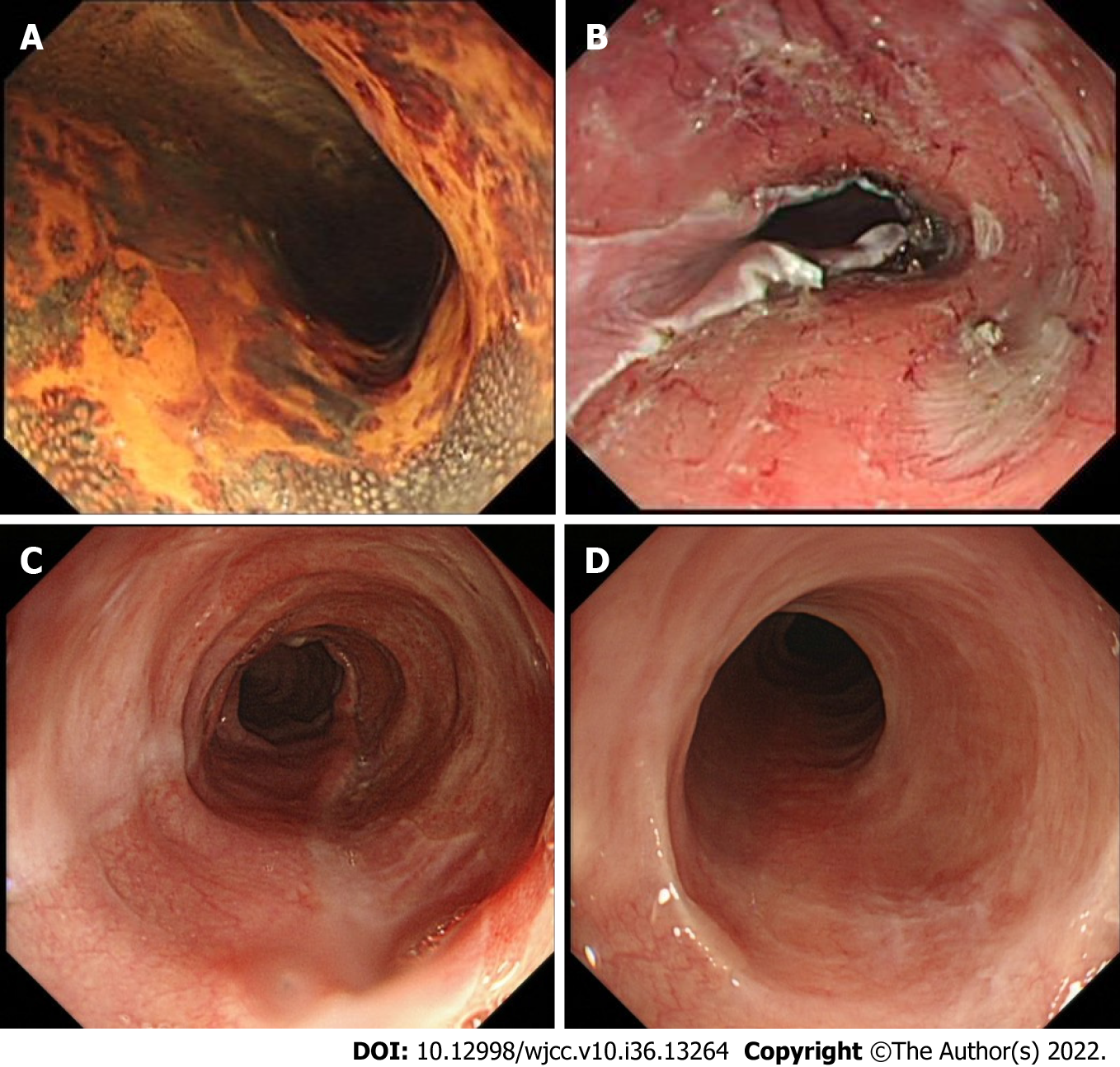Copyright
©The Author(s) 2022.
World J Clin Cases. Dec 26, 2022; 10(36): 13264-13273
Published online Dec 26, 2022. doi: 10.12998/wjcc.v10.i36.13264
Published online Dec 26, 2022. doi: 10.12998/wjcc.v10.i36.13264
Figure 1 Representative case (case 1).
A 67-yr-old female who underwent endoscopic resection for large superficial esophageal squamous cell carcinoma. A: Endoscopic view of the tumor after Lugol’s staining. The tumor spread to more than 3/4 of the circumference of the esophageal lumen; B: Endoscopic view of the ulcer bed immediately after endoscopic submucosal dissection. The width of the mucosal defect was ≥ 3/4 and less than the entire circumference. Then oral steroid was administered as a prophylactic treatment; C: Endoscopic view on the 30th d. The mucosal defect was still undergoing re-epithelialization, and a 9.9 mm diameter gastroscope (Olympus GIF-Q260J) could pass. D: Endoscopic view on the 180th d; Complete epithelialization is shown and a 9.9 mm diameter gastroscope (Olympus GIF-Q260J) could pass without dysphagia.
Figure 2 Representative case (case 3).
A 70-yr-old female who underwent endoscopic resection for large superficial esophageal squamous cell carcinoma. A: Endoscopic view of the tumor after Lugol’s staining. The tumor spread to about the entire circumference of the esophageal lumen; B: Endoscopic view of the ulcer bed immediately after endoscopic submucosal dissection. The width of the mucosal defect was the entire lumen circumference. Then oral steroid was administered as a prophylactic treatment; C: Endoscopic view 6 mo later. The mucosal defect underwent complete epithelialization, and an 9.9 mm diameter gastroscope (Olympus GIF-Q260J) could pass; D: Endoscopic view after 1 yr. The endoscope could pass without dysphagia.
- Citation: Zhan SG, Wu BH, Li DF, Yao J, Xu ZL, Zhang DG, Shi RY, Tian YH, Wang LS. Oral higher dose prednisolone to prevent stenosis after endoscopic submucosal dissection for early esophageal cancer. World J Clin Cases 2022; 10(36): 13264-13273
- URL: https://www.wjgnet.com/2307-8960/full/v10/i36/13264.htm
- DOI: https://dx.doi.org/10.12998/wjcc.v10.i36.13264










